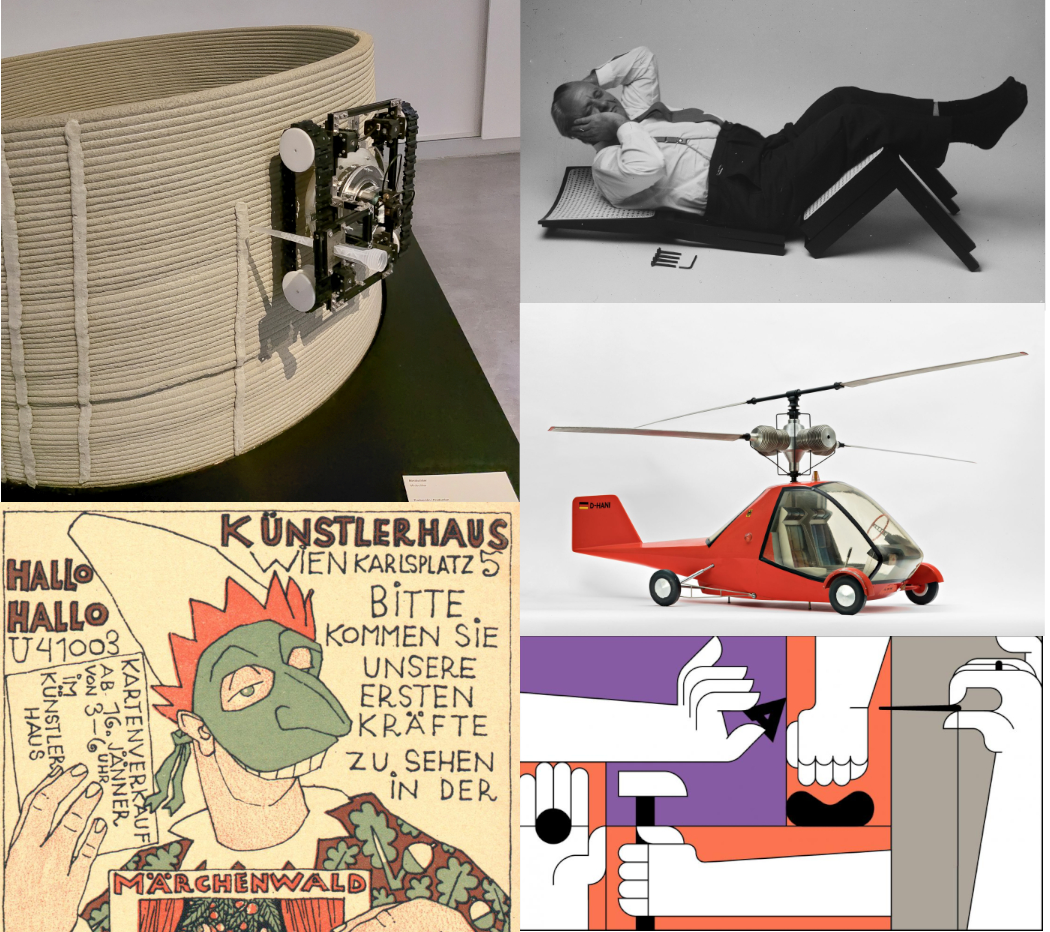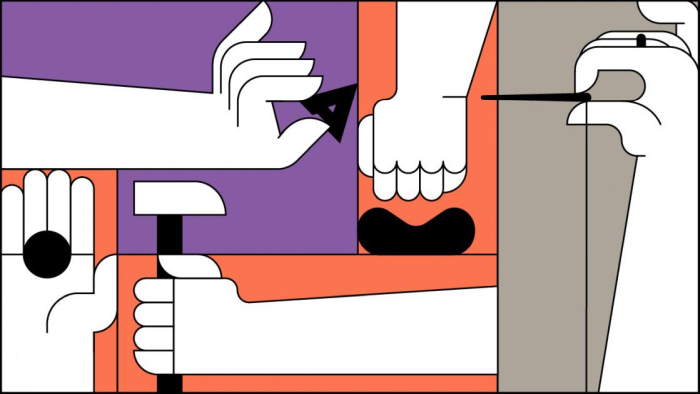5 New Architecture & Design Exhibitions for December 2022
According to popular (hi)story the tradition of the Christmas tree originated in the lands of the contemporary Germany. And with O Tannenbaum it was in the lands of the contemporary Germany that that most popular ode to the Christmas tree was first sung.
But it’s not by way of celebration of Germanic contributions to the Christmas season that all five of our new exhibition recommendations for December 2022 are in Germany, Austria or Germanophone Switzerland.
It’s just the way the dice fell. Just where the five most interesting sounding new architecture and design exhibition openings in December 2022 were to be found. As were what would have been at 6, 7 and 8 on our list. Had it continued that far.
And while we’d much rather, would much prefer, that they were more geographically, globally, strewn; thematically they are disparate, and all very much international, universal, in their subject matter and relevance. Plus, and lest we forget, an exhibition opening should never be understood as a reason to visit a particular museum, although please, please, do; but as an invitation to busy oneself with the subject and themes therein, an invitation to begin a journey.
Thus view what follows not as five exhibition recommendations in Germanophone Europe, but as five extra candles for your 2022 Christmas tree, five extra candles lighting your way forward into 2023 and beyond…….
“Living Prototypes. Digital Fabrication With Biomaterials” at Aedes Architecture Forum, Berlin, Germany
As opined ad infinitum, ad nauseam in these dispatches, one of the more important, yet most regularly overlooked, and popularly under-valued, drivers of developments in global architecture and design is and was the development of novel materials and processes. Novel materials and process which allow for new solutions, new approaches, new forms. Novel materials and processes relevant to the demands and challenges of the particular age. Novel materials and processes that allow for new relationships with the built environment and the objects we create for such. Novel materials and process such as the 3D printed earth, the 3D printed bioplastics and the robotic flax fibre winding that will feature in Living Prototypes. Digital Fabrication With Biomaterials.
Presenting the results of three concurrent international research projects funded by the German government, Living Prototypes will have at its centre a 1:1 scale installation based on a theoretical one bedroom house featuring 1:1 scale architectural and structural elements in woven flax fibre, 3D printed earth and 3D printed bioplastics.
1:1 flax, earth and bioplastic elements which although interesting and important in themselves, and which very much are the focus of the 3 projects, should stand in the exhibition much more as conduits for access to a questioning and a discussing of how we build, why we build as we do, how we could build, how we should build, and what would be the consequences, positive and negative, if we built differently.
Questions and discussions which are not only relevant and urgent in context of our contemporary climate emergency, but also in context of the global housing crises, of the global need for healthy, safe, durable, responsive, affordable housing. And thus questions and discussions not only for architects and urban planners and civil engineers, but for us all.
Living Prototypes. Digital Fabrication With Biomaterials is scheduled to open at Aedes Architecture Forum, Christinenstr. 18-19, 10119 Berlin on Saturday December 10th and run until Wednesday January 25th. Further details can be found at www.aedes-arc.de
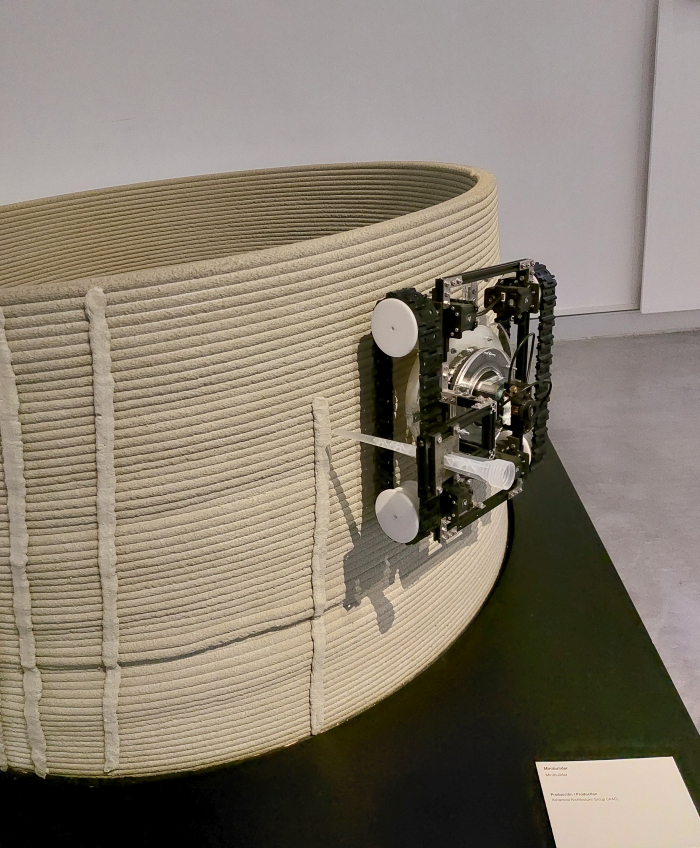
A Minibuilder crawling robot 3D printing with earth, a project by the Institute for Advanced Architecture of Catalonia, one of the teams featured in Living Prototypes. Digital Fabrication With Biomaterials, Aedes Architecture Forum, Berlin (but Minibuilders which may not be part of the exhibition, here as seen at PRINT3D. Reprint Reality, CaixaForum, Sevilla)
“Willy Guhl – Thinking with Your Hands” at the Museum für Gestaltung, Zürich, Switzerland
Born in Stein am Rhein in 1915 Willy Guhl initially completed an apprenticeship as a carpenter before studying under Wilhelm Kienzle at the Kunstgewerbeschule Zürich in the mid-1930s, and subsequently establishing his own atelier in Zürich. And from where Guhl went on to become not only one of the more important, informative and interesting of 20th century Swiss designers, but also one the more important, informative and interesting of 20th century design educators.
If a designer and educator who today is all too easily and all too quickly reduced to his 1950s beach/garden chair crafted from fibre cement. A work that reveals a lot about Guhl. But by no means everything.
Promising a presentation of sketches, models, prototypes and works by Guhl, from across the furniture, object, product and industrial design with which he concerned himself, and from across the five decades of his professional career, a particular focus of the exhibition promises to be explorations and discussions on Guhl’s approach to designing, an approach that he not only practised, but that he taught and mediated over the course of his circa 40 years as a tutor at the Kunstgewerbeschule Zürich; and an approach largely focussed on models, of modelling, of working in 3D with materials rather in 2D on paper. The Thinking with Your Hands of the exhibition title. Or indeed thinking with your whole body in context of Guhl’s approach to designing chairs developed to conform to the curves and idiosyncrasies of the human body. An approach which tends to imply a focus on function rather than form, of use rather than representation, on haptics rather optics, of design rather than art.
And a thinking with your hands visitors will be encouraged to try for themselves via a number of analogue interactive stations featuring various exercises in tying, knotting, braiding etc; analogue interactive stations which along with interviews with some of Guhl’s former students should extend and expand the presentation of Guhl’s works to allow one to better approach Willy Guhl, and to better appreciate why his 1950s fibre cement beach/garden chair reveals much, but by no mean all, about Willy Guhl, his approaches, his positions, his legacy and his ongoing relevance.
Willy Guhl – Thinking with Your Hands is scheduled to open at the Museum für Gestaltung, Ausstellungsstrasse 60, 8005 Zürich on Friday December 9th and run until Sunday March 26th. Further details can be found at https://museum-gestaltung.ch
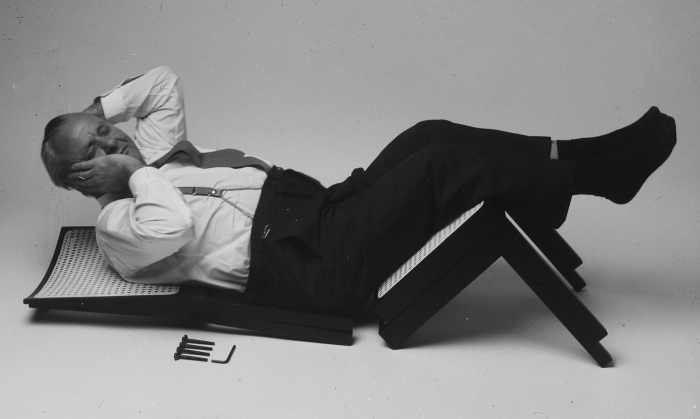
Willy Guhl relaxing on his Bankstuhl, ca 1960, part of Willy Guhl – Thinking with Your Hands, Museum für Gestaltung, Zürich (Photo: Bill W. Guhl © the Estate of Willy Guhl, courtesy Museum für Gestaltung, Zürich)
“Fetishizing the Future. Utopias of the third dimension” at the Zeppelin Museum, Friedrichshafen, Germany
“Can technology save the world” ask the Zeppelin Museum, Friedrichshafen, “or is it rather an instrument of power and a marketing promise?”
Which is inarguably one of the more important questions that needs to be posed as we race ever quicker towards our networked, smart, A.I., future with its ridiculous flying taxis, delivery drones and autonomous data collecting machines cars. And its Apps that tell you what to wear, what to eat, what to read and who to be friends with. While social media lies to you and trolls you. And that at the behest of, and to garner the profits of, Californians.
But don’t listen to us. Please don’t. Form your own opinions. Discuss. Debate. Listen. Think.
Activities that should be stimulated in Fetishizing the Future an exhibition that, unsurprisingly given its location, and Friedrichshafen’s long relationship with the Zeppelin, takes as its focus air transportation and promises a presentation of utopias of flight explored in the course of five chapters focussing on Speed, Freedom, Peace, Immortality and Sustainability, and via projects, technology, utopias, such as, for example, the Wagner Aerocar, Concorde or the East German Dolphin Airship, juxtaposed with 15 artistic projects and positions by creatives past and present, including, Aby Warburg, Alexander Kluge or Nuotama Frances Bodomo and which concern themselves with the chapter themes in and through a range of media.
Thus an exhibtion, a presentation, which should not only allow for differentiated perspectives and reflections on flight and our relationships with flight, but which, hopefully, will also be easily extendable to other contexts; and which in doing and being such should enable wider questions of our relationships with technology past, present and future, our relationships with utopia past, present and future, our relationships with the future past, present and future. And for all enable a more nuanced approach to the question, can technology save the world? And if so, how? And can flying taxis, honestly, ever, seriously, be part of that how? Honestly?
Fetishizing the Future. Utopias of the third dimension is scheduled to open at the Zeppelin Museum, Seestraße 22, 88045 Friedrichshafen on Friday December 16th and run until Sunday April 16th. Further details can be found at www.zeppelin-museum.de
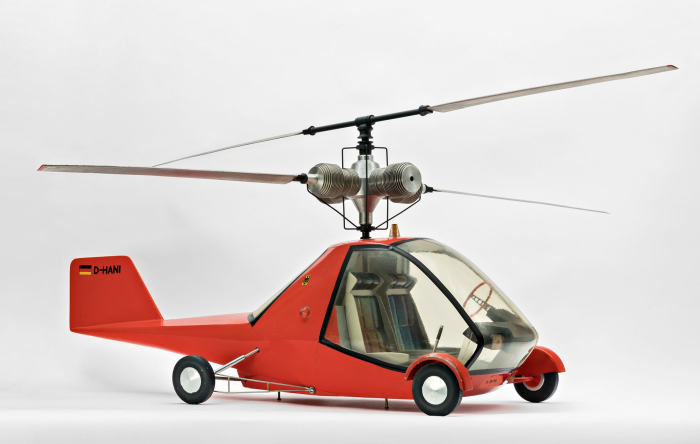
The Wagner Skytrac “Aerocar”, 1961, part of Fetishizing the Future. Utopias of the third dimension, Zeppelin Museum, Friedrichshafen (Photo Markus Tretter © and courtesy Zeppelin Museum, Friedrichshafen)
“The Fest. Between Representation and Revolt” at the Museum für angewandte Kunst, Vienna, Austria
We don’t know if it’s because such were more more less impossible, outlawed even, over the past couple of years, but this coming winter the Museum für angewandte Kunst, Vienna, will be celebrating celebrations, parties, festivities in all of their contexts and connotations.
Promising an exhibition concept which spans from the 16th century to today, from private family gatherings to mass cultural events, from Court balls to illegal raves, from the tastelessly ceremonial to the deliciously debauched, the focus of The Fest sounds like being less on the act of celebrating per se, as with the history of celebrations, our relationships with celebrations, the roles and functions of celebrations, parties, festivities in any given contemporary culture, the act of celebrating as an expression of both an individual and a collective identity, be that one voluntarily chosen or enforced upon one. And also, and not unimportantly, celebrations as creative acts, as events, moments, intimately related with, dependent upon, in discourse with, creative practices and creative processes.
An exploration to be undertaken through a mix of art, craft, design, clothing, photography, film and music in a space of some 1,480 sqm that promises not only to provide access to alternative, fresh, perspectives on the myriad ways, contexts, manners and reasons we celebrate, we stage festivities, but also for differentiated perspectives on some of the lesser considered consequences of the restrictions of the past couple of years. And that while we should all be grateful for the return of festivities, now is perhaps also an opportune moment to reflect on them more than we once did.
The Fest. Between Representation and Revolt is scheduled to open at the Museum für angewandte Kunst, Stubenring 5, 1010 Vienna on Wednesday December 14th and run until Sunday May 7th. Further details can be found at www.mak.at

An invitation to a Gschnas-Revue, 1929, part of The Fest. Between Representation and Revolt, Museum für angewandte Kunst Vienna (photo © and courtesy Museum für angewandte Kunst Vienna)
“The last of their kind. Crafts and professions in transition” at the Bundeskunsthalle, Bonn, Germany
Time passes, time changes, and as it does familiar aspects of any given society and community also pass and change, not least in terms of those occupations, those professions, jobs, we as humans have to perform in order to allow society to function and to support the contemporary, and near future, population of our communities.
Occupations that in most all cases have been performed for as long as anyone can remember and whose close associations with daily life, and with individual biographies, make them part of the collective understandings of any society or community.
And when they go?
Or perhaps alternatively, why do the go? Must they go? Is it perhaps not good that they go? And when they go, what’s left? What’s been lost?
Questions the Bundeskunsthalle aim to explore through a focus on five endangered professions. Five professions defined by the curators as endangered in the contemporary German State of Nordrhein-Westfalen, but which can either be understood in a global context or should allow for an easy comparison in other regions. Five endangered professions which allow for varying perspectives on both our relationships with crafts and professions and also the processes and implications of the passing of crafts and professions. And, and most interestingly, five professions not of the, let’s say, archaic type, of the type who have in many regards already passed, such as, for example, the horn combmaker as featured in Craft as Myth. Between Ideal and Real Life at the Museum Angewandte Kunst, Frankfurt, or the axe carver, the wheelwright, the candle maker, but five relatively everyday, one could almost say mundane trades and professions that everyone, more or less, seeks out on a regular basis: the baker, the tailor, the coal miner, the cashier and the typesetter. Whereby the last is arguably as archaic as the horn combmaker.
And thus a focus on crafts and professions that are still part of everyday life, certainly in contemporary Nordrhein-Westfalen, but which we can all well imagine vanishing before all too long, or certainly undergoing a radical transformation; a focus which should thus help sharpen considerations and reflections on not just those crafts and professions and occupations which are part of our contemporary societies and communities, but also the more fundamental question of why we work, what is the actual function of the job of work I do? And is it necessary to allow society to function and to support the contemporary, and near future, population of my community…….?
The last of their kind. Crafts and professions in transition is scheduled to open at the Bundeskunsthalle, Helmut-Kohl-Allee 4, 53113 Bonn on Saturday December 3rd and run until Sunday April 2nd. Further details can be found at www.bundeskunsthalle.de
Tagged with: Aedes, Berlin, Biomaterials, Bonn, Bundeskunsthalle, Fetishizing the Future, Friedrichshafen, Living Prototypes, MAK, Museum für angewandte Kunst, Museum für Gestaltung, The Fest, The last of their kind, Thinking with Your Hands, Vienna, Wien, Willy Guhl, Zeppelin Museum, Zürich
